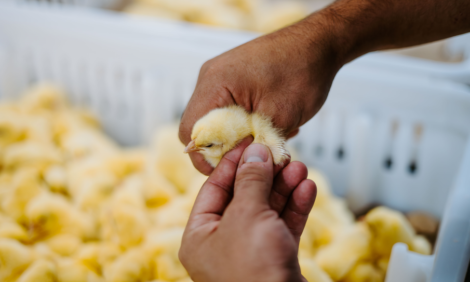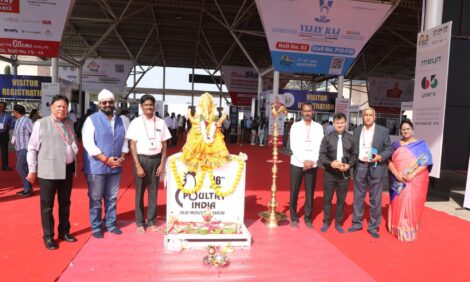



Single Vaccination of Broilers Does Not Reduce Transmission of H5N1
A single vaccination of commercial broilers does not reduce transmission of the H5N1 highly pathogenic avian influenza (HPAI) virus, according to research carried out in Indonesia.Okti Poetri of the Faculty of Veterinary Medicine at Bogor Agricultural University in Indonesia, together with researchers from Utrecht University, Wageningen University and Research Centre and the National Institute for Public Health and the Environment in the Netherlands, investigated the efficacy of a single vaccine against H5N1 avian flu in commercial broilers. Their paper has been published in the journal, Veterinary Research.
Vaccination of chickens has become routine practice in Asian countries in which H5N1 highly pathogenic avian influenza (HPAI) is endemic, according to Poetri and co-authors. This mainly applies to layer and breeder flocks but broilers are usually left unvaccinated. They investigated whether vaccination could reduce HPAI H5N1 virus transmission among broiler chickens.
Four sets of experiments were carried out, each consisting of 22 replicate trials containing a pair of birds. Experiments 1-3 were carried out with four-week-old birds that were unvaccinated or vaccinated at day 1 or at day 10 of age. Experiment 4 was carried out with unvaccinated day-old broiler chicks. The vaccine was a locally produced inactivated oil-emulsion vaccine.
One chicken in each trial was inoculated with H5N1 HPAI virus. The course of the infection chain was monitored by serological analysis, and by virus isolation performed on tracheal and cloacal swabs. The analyses were based on a stochastic SEIR model using a Bayesian inferential framework.
When inoculation was carried out at the 28th day of life, transmission was efficient in unvaccinated birds, and in birds vaccinated at day-old and 10 days of age.
In these experiments, estimates of the latent period (around 1.0 day), infectious period (around 3.3 days), and transmission rate parameter (around 1.4 per day) were similar, as were estimates of the reproduction number (approximately 4) and generation interval (around 1.4 day).
Vaccination only induced very low titres of HI antibodies in few birds and a single vaccination was not effective in reducing transmission. The most likely explanation for the reduced efficacy in comparison to layers was the presence of maternally derived antibodies (MDA) at time of vaccination, said the researchers.
Poetri and co-authors concluded that transmission was significantly less efficient in unvaccinated chickens when inoculation was carried out at day-old. They added that the results show vaccination of broiler chickens does not reduce transmission, which may be due to the interference of maternal immunity.
Reference
Poetri O., A. Bouma, I. Claassen, G. Koch, R. Soejoedono, A. Stegeman and M. van Boven. 2011. A single vaccination of commercial broilers does not reduce transmission of H5N1 highly pathogenic avian influenza. Veterinary Research, 42:74. doi:10.1186/1297-9716-42-74
Further Reading
| - | You can view the full report by clicking here. |
Further Reading
| - | You can visit the Avian Flu page by clicking here. |
August 2011









